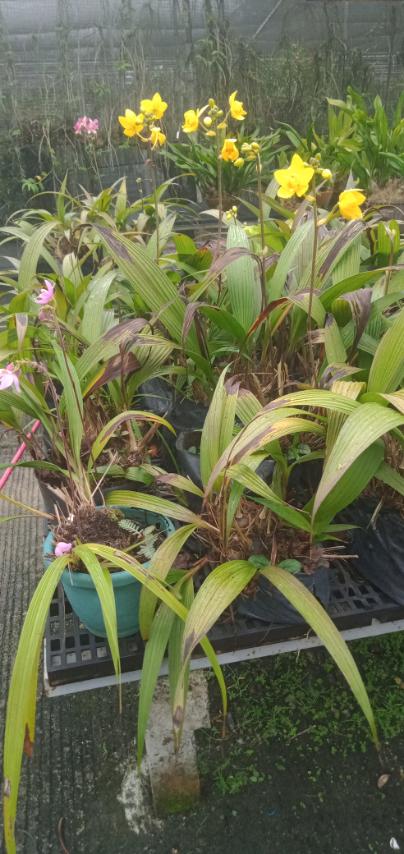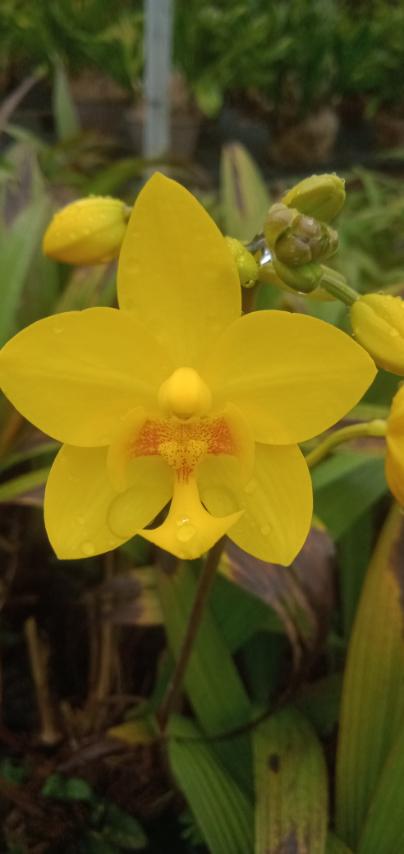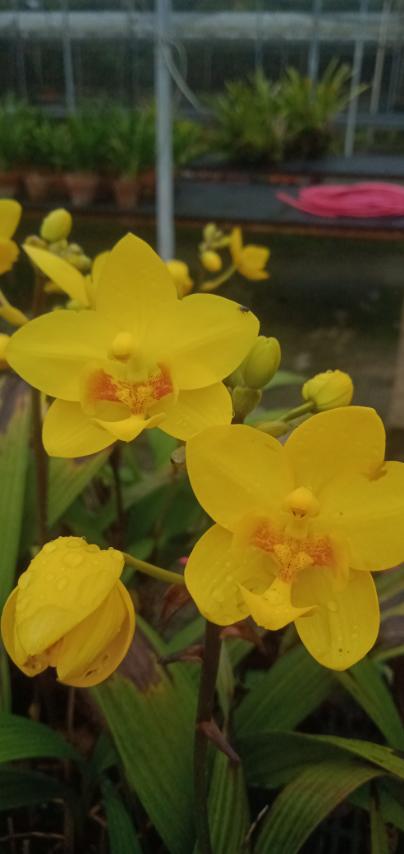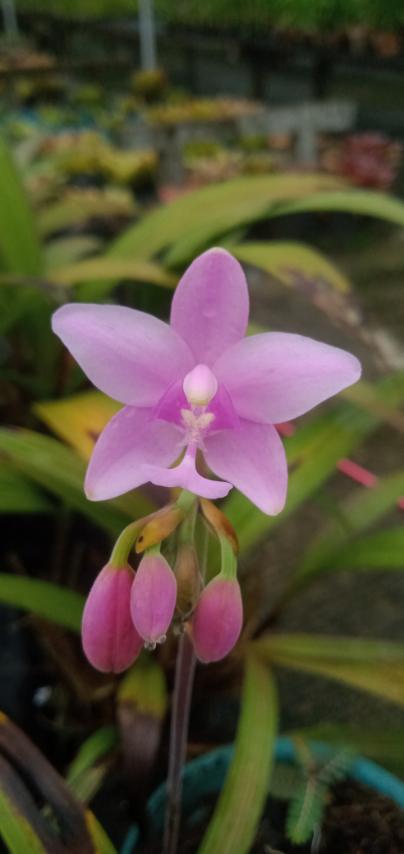
Spathoglottis, commonly known as the ground orchid, is a type of sympodial orchid which means it has several growths and does not grow indefinitely like its monopodial counterparts. It's recognized by its bulbous structure and long leaves with prominent longitudinal veins. This orchid variety is a favorite in many rural gardens, primarily due to its low-maintenance nature. It's also widespread in the Philippine archipelago. These orchids have a rich and natural diversity of strikingly vibrant petals in shades of purple, pink, yellow, and white.
A pioneer plant
Spathoglottis is often referred to as a pioneer plant, particularly in Asia. In the aftermath of volcanic eruptions that leave the land devastated by ashes and lava. Alongside grasses, Spathoglottis emerges as one of the initial plants to colonize the barren landscape. It exhibits lithophytic characteristics, displaying a preference for growing on rocks. As a pioneer orchid, it possesses the unique advantage of proliferating even before other plant species can establish themselves.

Unique reproduction
Similar to other orchids, Spathoglottis produces pods containing thousands of seeds. Spathoglottis seeds are known as 'bare seeds' due to their almost complete lack of cotyledon. Cotyledon serves as the embryo's source of nourishment, but in the case of these seeds, they are essentially enclosed within a sac. To thrive, Spathoglottis has co-evolved with a specific fungus called mycorrhiza. This mycorrhizal fungus attaches itself to the seeds, penetrating their cell walls to establish a mutually beneficial symbiotic relationship. The mycorrhiza supplies essential nutrients to the seeds, while as the seeds grow, they reciprocate by providing the fungi with carbohydrates through photosynthesis.
An appealing aspect for growers is the ability to propagate Spathoglottis without the need for a laboratory. The process involves simply sprinkling the seeds at the base of the mother plant. The root system of the mother plant serves as the ideal environment for germination and growth. This is primarily because the seeds require the mycorrhiza fungi that the mother plant has already established. This method, aside from being cost-effective, represents one of the fastest ways to achieve mass production of Spathoglottis, compared to the more expensive process of cloning.

Spathoglottis can also be propagated through division. Each individual bulb has the potential to develop into a separate plant. To ensure optimal growth, it's advisable to secure the plant to a stick or wire to prevent it from shaking."
Growing requirements
Spathoglottis is extensively used in landscaping, where it can be grown either directly in the ground or in pots placed on the ground. This versatile plant can thrive in both full sun and partial shade conditions.
Spathoglottis exhibits a remarkable ability to adapt to full sunlight conditions. However, there exists a specific species, Spathoglottis plicata, which thrives in dappled sunlight. This particular species boasts vibrant, purple-colored flowers and presents several distinct variations. These include the 'alba,' characterized by its striking white blossoms, as well as a pinkish variation.
When planting Spathoglottis, it's crucial to ensure that only the roots are submerged in the ground, while the bulb remains above the soil surface. Burying the bulbs underground can make them vulnerable to rot.
For optimal growth, a commonly used organic fertilizer is well-decomposed animal manure. When using organic fertilizer, it's important to remember that the maximum amount to be incorporated into the growing medium should not exceed 15%. Exceeding this limit can potentially lead to plant rot.

Various media can be used for cultivation, including soil, volcanic rocks, regular rocks, moss, coconut husk cubes, and coconut peat.
While some varieties of Spathoglottis can be challenging to care for, a key strategy to ensure their thriving is to elevate them by planting them in pots. In their natural habitat, they typically grow on the ground. However, the soil in such environments can harbor numerous pathogens such as bacteria and fungi, and it may also be easily accessible to animals that can potentially eat the plant.
The Spathoglottis season begins in September and can extend through December. Its flowers have an impressive longevity, often lasting for up to three months.

Other varieties
In addition to Spathoglottis plicata, there is another notable member of the Spathoglottis family known as Spathoglottis philippinensis. This smaller orchid features striking yellow flowers with a hint of red color.
One particularly popular variety is Spathoglottis 'Miss Universe' (Spathoglottis x-parsonsii, a natural hybrid resulting from the cross of plicata and vanoverberghii species. Being a hybrid, it exhibits a phenomenon called heterosis, or hybrid vigor, wherein the average plant of this cross surpasses the characteristics of both parent species. In the case of 'Miss Universe,' this translates to thicker and larger spikes, a greater number of flowers, a more robust plant overall, and a flower that showcases a captivating combination of colors not seen in the parent species.
With dedicated breeding efforts, it wouldn't be surprising to see breeders eventually develop a Spathoglottis variety suitable for use as a cut flower. However, this endeavor will require both patience and time. At present, Spathoglottis remains an ideal choice as a potted plant.
Photo courtesy of Manila Bulletin Agriculture